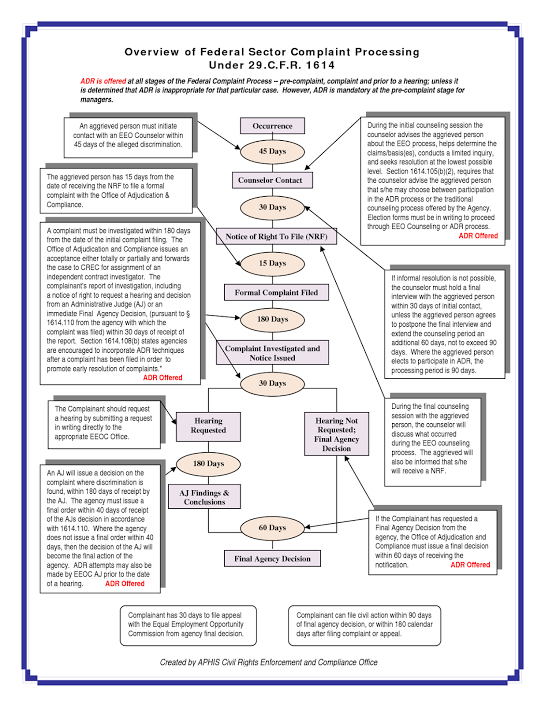During the past two years, we noticed many federal agencies deviating from a clearly defined, though not stringent, EEO complaint process (see, EEOC MD-110). It is important to realize federal agencies control the “front end” of the EEO Complaint process and the EEOC takes over sometime after the Report of Investigation (ROI) depending on employee elections of process. Some examples include:
- Requiring employees to waive access to EEO counselor and counseling to pursue ADR (mediation)
- Speculating as to employee EEO claims
- Requiring employee to submit narrative statements (verbal or written) concerning complaints
- Requiring, or at times “strongly suggesting” employees submit evidence during informal stage
- Requiring employees to first contact (prior to filing a complaint or contacting a bona-fide EO counselor) “collateral duty EEO contacts”; typically fellow employees (in one case, even a supervisor)
- Requiring employees to rebut statements of RMO’s (Responsible Management Officials) or agency representatives
- Using agency “Liaisons” instead of EEO Counselors or using those terms interchangeably
- Engaging in mediation that more resembles a de facto trial, even suggesting formal opening statements and evidentiary submissions
These are a few of the changes we noticed. While these changes are not “illegal” in the context of EEOC Management Directive MD-110 or the EEOC published Federal Sector Complaint Process, they represent distinct agency regulatory changes not necessarily in favor of the affected federal employee or otherwise truly supporting the intent of the EEO process. These changes also complicate matters and cause confusion in employees. For example, one client thought she had made contact with an EEO counselor when in fact she had not. In another case, a client had to ask at least eight times what stage of the EEO complaint process he was in. An even more alarming trend are significant process differences within the same agency, same sub-agency, and even differences in the same agency simply based on geographic location (Indian Health Services and U.S. Border Patrol are good examples in which the agency informal EEO process varies wildly within the same organization and even local area of operations).
Based on the foregoing, we thought it would be a good idea to post an accurate validated flow-chart of the Federal Sector EEO Complaint Process. This is the same flow chart we send clients.

BOOK A FREE CONSULTATION | WHAT WE DO | CONSULTING QUESTIONS | FEE STRUCTURE
The contents of this website (InformedFED.com) are intended to convey general information only and not to provide legal advice or opinions. Consultants at InformedFED are not attorneys. They are senior level practitioners of employee labor relations and EEO. The contents of this website, and the posting and viewing of the information on this website, should not be construed as, and should not be relied upon for, legal or employment advice in any particular circumstance or situation. The information presented on this website may not reflect the most current legal or regulatory developments. No action should be taken in reliance on the information contained on this website and we disclaim all liability in respect to actions taken or not taken based on any or all of the contents of this site to the fullest extent permitted by law. InformedFED is comprised of independent senior level practitioners and consultants who are not employees of InformedFED.
